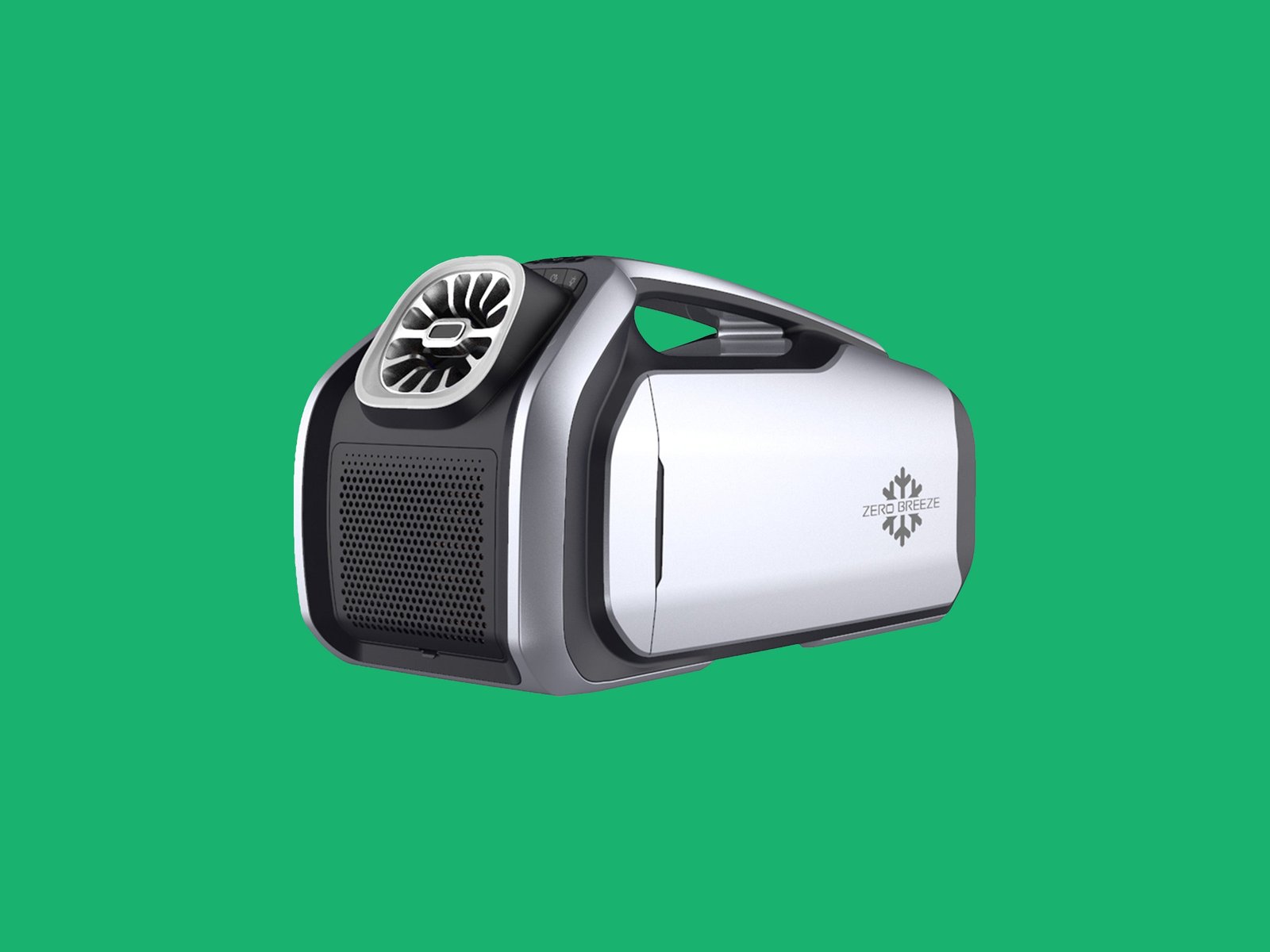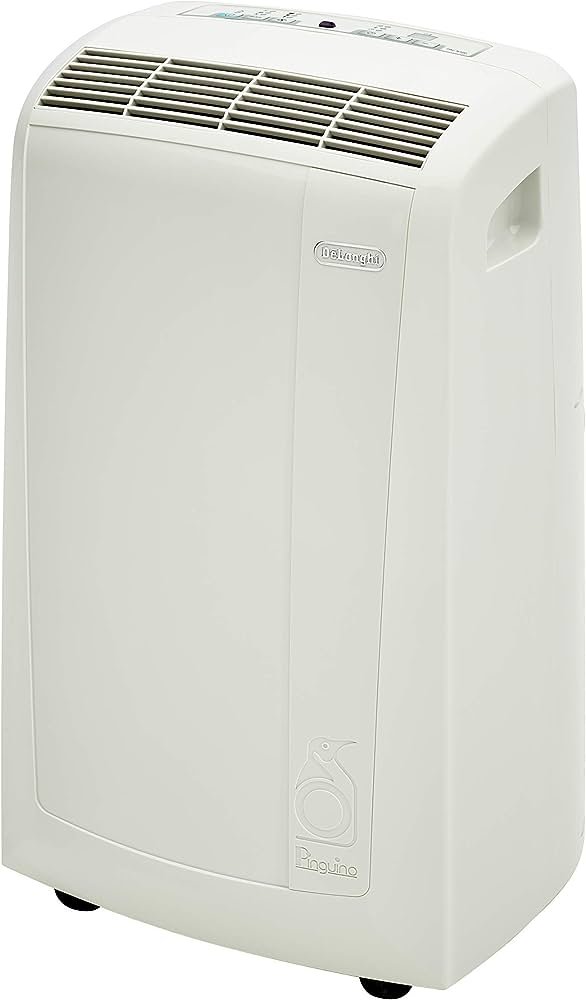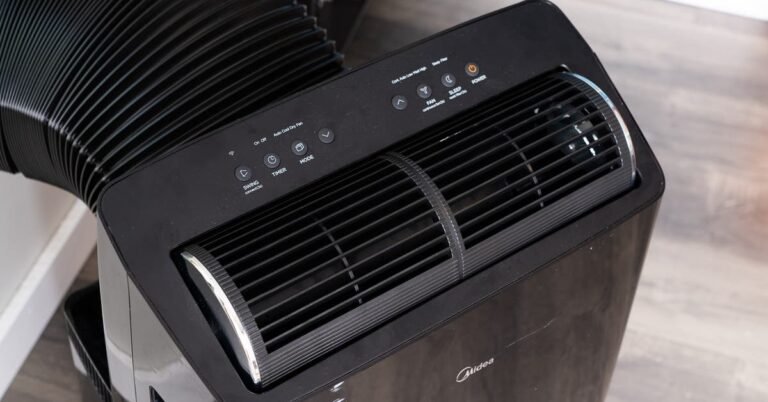Can You Use a Portable Air Conditioner On a Boat? Discover the Power of Cool Breezes!
Yes, you can use a portable air conditioner on a boat.
Benefits Of Using A Portable Air Conditioner On A Boat
Using a portable air conditioner on a boat provides the benefit of keeping the cabin cool and comfortable during hot summer days. This allows for a more enjoyable boating experience and ensures a relaxing environment onboard.
Sailing in hot weather can be uncomfortable, especially when the sun is blazing and the temperature is rising. But with a portable air conditioner on your boat, you can enjoy a comfortable sailing experience regardless of the scorching heat. Let’s explore the benefits of using a portable air conditioner on a boat:
Comfortable Sailing In Hot Weather:
- Efficient Cooling: A portable air conditioner on your boat will provide you with efficient cooling, allowing you to escape the heat and enjoy a pleasant sailing experience.
- Temperature Control: With a portable air conditioner, you can easily control the temperature on your boat. Set it to your preferred level and sail in comfort, no matter how hot it gets outside.
- Maximize Enjoyment: By keeping the boat’s interior cool, you can make the most of your time on the water. Whether you’re lounging, socializing, or taking a break, a comfortable environment enhances your sailing experience.
Provides Relief From High Humidity:
- Humidity Reduction: High humidity can make the air feel heavy and uncomfortable, especially on a boat. A portable air conditioner helps reduce humidity levels, creating a more pleasant and breathable atmosphere on board.
- Prevents Mold and Mildew: Excessive moisture can lead to the growth of mold and mildew, which can damage your boat and negatively impact your health. A portable air conditioner helps to keep the humidity in check, preventing the growth of these harmful substances.
Allows For Longer Trips Without Worrying About Heat Exhaustion:
- Prevents Heat Exhaustion: When spending long hours on a boat in hot weather, the risk of heat exhaustion increases. Portable air conditioners help maintain a cool and comfortable environment, reducing the chances of heat-related illnesses.
- Extended Trip Duration: With a portable air conditioner, you can extend your boat trips without constantly worrying about the unbearable heat. Stay cool and enjoy your time on the water for longer periods.
By using a portable air conditioner on your boat, you can sail comfortably in hot weather, find relief from high humidity, and enjoy longer trips without the fear of heat exhaustion. Make the most of your boating adventures with the added comfort and convenience provided by a portable air conditioner.
Factors To Consider Before Using A Portable Air Conditioner On A Boat
Before using a portable air conditioner on a boat, there are important factors to consider. These include the power source, size and capacity, water condensation, ventilation, and noise level. Ensuring the suitability of the portable air conditioner for the boat environment is crucial for optimal cooling and comfort on board.
Boating is a fantastic way to beat the summer heat and enjoy the open water. But staying cool on a boat can be challenging, especially when the sun is blazing and there’s no shade in sight. That’s where a portable air conditioner comes in handy.
Before you rush out to buy one, however, there are a few factors to consider to ensure you make the right choice and have a comfortable boating experience. Let’s take a look at what you need to keep in mind.
Proper Sizing And Power Requirements:
When it comes to choosing a portable air conditioner for your boat, selecting the right size is crucial. A unit that’s too big may end up wasting energy, while one that’s too small won’t effectively cool the space. Here are important points to consider:
- Measure your boat’s cabin or the specific area you want to cool to determine the appropriate BTU (British Thermal Unit) rating for the air conditioner.
- Take into account factors like insulation, windows, and direct sunlight, as they impact the cooling requirements.
- Choose a portable air conditioner that can be easily transported and installed in your boat without taking up too much space.
- Ensure the power requirements of the air conditioner are compatible with your boat’s electrical system.
Availability Of Power Source:
Using a portable air conditioner on a boat requires a reliable power source. Here are some things to think about:
- Determine if your boat has a sufficient power supply to handle the air conditioner’s electrical needs.
- Check the amp rating of your boat’s electrical system to ensure it can handle the additional load.
- Consider the availability of shore power or a generator on your boat, as these can provide a more stable power source for running the air conditioner.
- If you plan to rely solely on your boat’s batteries, make sure they are capable of powering the air conditioner for the necessary amount of time.
Ventilation And Exhaust Considerations:
Proper ventilation and exhaust are essential factors to address when using a portable air conditioner on a boat. Here’s what to keep in mind:
- Ensure there is enough space in your boat’s cabin for the air conditioner’s intake and exhaust vents, allowing for proper airflow.
- Position the air conditioner in a way that provides optimal ventilation without obstructing any walkways or emergency exits.
- Securely seal any openings where the air conditioner vents connect to the boat’s structure to prevent air leaks.
- Consider using a vent hose extension to redirect hot air away from the cabin to ensure cooling efficiency.
By considering these factors before using a portable air conditioner on your boat, you can make an informed decision and create a comfortable environment while enjoying your time on the water. Remember to choose the right size, assess the power source, and ensure proper ventilation and exhaust for a hassle-free boating experience.
Stay cool and enjoy your summer adventures!
Types Of Portable Air Conditioners Suitable For Boats
Portable air conditioners are a great option for keeping boats cool during hot weather. There are different types available, including self-contained units, split systems, and compact window units, all providing effective cooling solutions for boating enthusiasts.
Boating enthusiasts looking for relief from the sweltering summer heat often wonder if they can use a portable air conditioner on their boat. The good news is that there are several types of portable air conditioners suitable for boats, offering convenient and efficient cooling solutions.
We will explore three distinct types: ventless portable air conditioners, portable air conditioners with exhaust hoses, and dual hose portable air conditioners.
Ventless Portable Air Conditioners:
- Ventless portable air conditioners do not require an external exhaust mechanism, making them a popular choice for boaters. These units function by collecting the hot air and moisture from the cabin and evaporating it, effectively cooling the space.
- They are compact and easy to install, often designed with mobility in mind. Some models come with wheels or handles for effortless transport.
- Ventless portable air conditioners usually utilize evaporative cooling technology, which is energy-efficient and environmentally friendly.
- These units also act as dehumidifiers, reducing the moisture levels in the cabin. This feature is particularly beneficial in humid climates or coastal areas.
Portable Air Conditioners With Exhaust Hoses:
- Portable air conditioners with exhaust hoses are another viable option for boaters. These units have a hot air exhaust hose that needs to be vented outside the cabin, typically through a window or a specially designed opening in the boat.
- They cool the cabin by pulling in warm air, cooling it with refrigerant, and expelling the hot air outside.
- These units offer powerful cooling capabilities and are suitable for larger boat cabins or areas with limited ventilation.
- While the exhaust hose requires careful positioning and securing to maintain efficient cooling, these air conditioners provide effective temperature control on the boat.
Dual Hose Portable Air Conditioners:
- Dual hose portable air conditioners are similar to the previously mentioned type but feature two separate hoses. One hose pulls in air from outside, while the other expels the hot air.
- As a result of this dual hose design, these units can cool the cabin more efficiently than single hose models.
- Dual hose portable air conditioners excel in hot climates and allow for quicker cooling in larger spaces.
- With their robust cooling prowess, these air conditioners are an excellent choice for boats with ample power supply and larger cabin areas.
Considering the diverse range of portable air conditioners available for boats, boaters can choose the most suitable option based on their specific needs. Ventless portable air conditioners are ideal for those seeking simplicity and efficiency, while portable air conditioners with exhaust hoses and dual hose models provide powerful cooling for larger spaces.
Whichever type you select, achieving a comfortable and pleasant boating experience even in the hottest weather is now easier than ever.
Ensuring The Proper Installation Of A Portable Air Conditioner On A Boat
Installing a portable air conditioner on a boat requires proper care to ensure its functionality. With specific guidelines to follow, it’s important to know if a portable unit is suitable for boat use.
Installing a portable air conditioner on a boat can greatly enhance comfort during those hot summer days on the water. However, it is crucial to ensure the proper installation to maximize its functionality and performance. Here are some key considerations to keep in mind:
Finding The Ideal Location For Installation
Determining the ideal location to install your portable air conditioner is essential for its effective cooling and overall performance. Consider the following factors when choosing where to place the unit:
- Ventilation: Ensure the unit has access to fresh air for proper cooling. Place it near a window or any other area where it can draw in an adequate amount of fresh air.
- Avoid direct sunlight: Direct exposure to sunlight can affect the cooling efficiency of the portable air conditioner. Find a spot that is shaded or use a sunshade to protect the unit.
- Accessibility: Choose a location that allows easy access for maintenance and cleaning.
Securing The Unit To Prevent Movement While At Sea
Given the unpredictable nature of the sea, it is vital to secure the portable air conditioner to prevent any movement or potential damage. Here’s how you can secure the unit:
- Mounting brackets: Install sturdy mounting brackets to secure the portable air conditioner in place. These brackets will provide stability and ensure that the unit remains stationary, even during rough waters.
- Straps or bungee cords: Use straps or bungee cords to further secure the unit to a solid structure on the boat. This additional measure will help prevent any dislodging or tipping over of the air conditioner.
Sealing Any Potential Air Leaks
To optimize the cooling efficiency of your portable air conditioner on a boat, it is important to seal any potential air leaks. Here’s what you need to do:
- Window sealing kit: If the unit is installed near a window, use a window sealing kit to seal gaps and prevent any leakage of cool air to the outside.
- Weatherstripping: Apply weatherstripping around any gaps or openings where the air conditioner is installed. This will ensure a tight seal and prevent any outside air from entering the boat.
By following these installation guidelines, you can enjoy the benefits of a portable air conditioner on your boat while keeping a cool and comfortable environment. Take the time to find the ideal location, secure the unit properly, and seal potential air leaks to make the most of your cooling system at sea.
Happy boating!
Maintenance And Care For A Portable Air Conditioner On A Boat
Discover how to properly maintain and care for a portable air conditioner on a boat, ensuring cool and comfortable air while out on the water. Find out if using a portable air conditioner on a boat is a viable option for you.
Maintaining And Caring For A Portable Air Conditioner On A Boat
Having a portable air conditioner on your boat can be a game-changer, especially during those hot summer months. However, like any other appliance, it requires regular maintenance and care to ensure optimal performance and longevity.
Regular Cleaning Of Air Filters:
- Cleaning the air filters regularly is crucial for the efficient operation of your portable air conditioner. Here’s how you can do it:
- Remove the air filters from the unit.
- Use a soft brush or vacuum cleaner to remove dust and debris.
- If the filters are washable, gently wash them with mild detergent and water.
- Allow the filters to air dry completely before reinstalling them.
Checking And Cleaning Condensation Drain Lines:
- Condensation drain lines are responsible for removing excess moisture from the air conditioner. Here’s how you can keep them in good working condition:
- Inspect the drain lines for any clogs or obstructions.
- Use a pipe cleaner or a small brush to remove any debris.
- Pour a mixture of bleach and water through the drain lines to eliminate any mold or mildew buildup.
- Ensure that the condensation drain lines are properly connected and free from leaks.
Ensuring Proper Storage During Off-Seasons:
- Proper storage of your portable air conditioner during the off-season is essential to prevent damage and maintain its efficiency. Consider the following tips:
- Clean the unit thoroughly before storing it.
- Remove any water from the water tank or condensation tray.
- Store the air conditioner in a cool, dry place to prevent rust or mold growth.
- Avoid placing any heavy objects on top of the unit to prevent deformation.
Remember, regular maintenance and care of your portable air conditioner on a boat will not only keep it running smoothly but also extend its lifespan. Following these simple steps will ensure that you can enjoy cool and comfortable boating experiences whenever you need them.
Other Cooling Options For Boats
Looking to cool down your boat? Consider using a portable air conditioner. It’s a convenient option that can help keep your vessel comfortable during hot weather.
When it comes to cooling options for boats, portable air conditioners are not the only solution. Depending on your specific needs and preferences, there are several other options worth considering. Let’s explore some of these alternatives below:
Marine Air Conditioners:
- Marine air conditioners are specially designed to withstand the harsh marine environment. They come in various sizes and cooling capacities to suit different boat sizes and cabins.
- These air conditioners are typically more expensive than portable units, but they offer superior cooling performance and durability.
- Marine air conditioners are installed permanently on the boat and require professional installation.
- They often come with separate air handlers for different areas of the boat, allowing for customized cooling.
Fans And Ventilation Systems:
- Fans and ventilation systems are a cost-effective and energy-efficient way to keep the air flowing and provide some relief from the heat on your boat.
- Ceiling fans, portable fans, or even small oscillating fans can be strategically placed to improve air circulation in the cabin or cockpit.
- Ventilation systems, like solar-powered vents or turbine vents, help remove hot air and bring in fresh air to keep the boat cool.
- Combination systems that incorporate both fans and ventilation can be highly effective in maintaining a comfortable temperature on board.
Awning And Shade Solutions:
- Awnings and shade solutions provide effective protection against the sun’s rays, reducing heat buildup on your boat.
- Bimini tops can be installed to create shade over the cockpit area, offering a cool and shaded space for relaxation.
- Sunshades or canopies can be set up on the deck to provide shade for lounging or dining areas.
- Installing shade sails or awnings on the deck can also help block direct sunlight and keep the interior cooler.
To ensure a pleasant boating experience, portable air conditioners are just one of the cooling options available. Depending on your needs and budget, marine air conditioners, fans and ventilation systems, or awning and shade solutions can provide effective cooling solutions onboard.
Consider the size of your boat, the desired cooling capacity, and the investment you’re willing to make to find the most suitable option for your boating adventures.
Faqs For Using A Portable Air Conditioner On A Boat
Using a portable air conditioner on a boat is possible, providing relief from the heat during your marine adventures. Ensure proper ventilation and power supply to maximize its efficiency while keeping the cabin cool and comfortable.
Can A Portable Air Conditioner Be Used While The Boat Is Moving?
- Yes, portable air conditioners can be used while the boat is moving as long as certain precautions are taken:
- Ensure that the air conditioner is securely anchored to prevent it from shifting or falling during movement.
- Use a portable air conditioner with a low center of gravity to minimize the risk of tipping.
- Make sure the power source is stable and reliable to prevent any electrical hazards.
- Keep the air conditioner away from any open windows or doors to preserve its cooling efficiency.
- Regularly check the air conditioner’s filters and vents to keep them clean and functioning properly.
Can A Portable Air Conditioner Cool A Boat Cabin Overnight?
- Yes, a portable air conditioner can cool a boat cabin overnight, but it depends on various factors such as:
- The size of the boat cabin: Portable air conditioners are designed to cool smaller spaces, so it may be more effective in compact cabins rather than larger ones.
- Insulation of the cabin: Well-insulated cabins will retain the cooled air more efficiently, allowing the portable air conditioner to work better.
- Power source: Ensure that the power supply is sufficient to run the air conditioner consistently throughout the night.
- Cooling capacity of the air conditioner: Check the BTU rating of the portable air conditioner to ensure it is suitable for the size of your boat cabin.
Is It Safe To Use A Portable Air Conditioner On A Boat?
- Yes, it is generally safe to use a portable air conditioner on a boat, but there are a few safety considerations to keep in mind:
- Electrical safety: Ensure that the power supply and electrical connections are in good condition to prevent any electrical hazards or short circuits.
- Ventilation: Make sure the portable air conditioner is properly ventilated to avoid the accumulation of hot air within the boat cabin.
- Water management: Ensure that the condensate generated by the air conditioner is collected and drained appropriately to prevent any water damage on the boat.
- Carbon monoxide risk: Portable air conditioners do not produce carbon monoxide, but if you are using a vented air conditioner that requires an exhaust hose, make sure it is properly vented to the outside to avoid any build-up of CO.
- Regular maintenance: Keep the air conditioner clean and well-maintained to ensure optimal performance and minimize any potential risks.

Credit: www.amazon.com
Frequently Asked Questions On Can You Use A Portable Air Conditioner On A Boat
How Do You Cool A Boat Cabin?
To cool a boat cabin, use a combination of ventilation, shading, insulation, and portable fans or air conditioning units.
Can You Put Ac In A Boat?
Yes, you can install an AC in a boat for a comfortable and cool experience on board.
Will A Portable Ac Unit Work In An Rv?
Yes, a portable AC unit can be used in an RV to provide cooling.
How Many Watts Does It Take To Run A Boat Air Conditioner?
A boat air conditioner typically requires around 600-1,500 watts to operate efficiently.
Conclusion
After carefully considering the factors discussed in this blog post, it becomes evident that using a portable air conditioner on a boat is indeed feasible. With the right model, proper installation, and regular maintenance, boat owners can enjoy a comfortable and cool interior while cruising.
Portable air conditioners offer convenience, versatility, and energy-efficient cooling solutions for boat owners seeking relief from the summer heat. By following the recommendations provided, such as ensuring sufficient power supply and avoiding water damage, boat owners can make the most of these portable units.
It is important to keep in mind the size and capacity of the boat, as well as the specific requirements of the portable air conditioner, to ensure optimal performance. Investing in a quality portable air conditioner can significantly enhance the boating experience, making it enjoyable even during scorching hot days.
So, don’t hesitate to consider a portable air conditioner for your boat and enjoy the best of both worlds – comfort and adventure.






